Published on 08.07.2025
Helmholtz Imaging Conference 2025 Recap
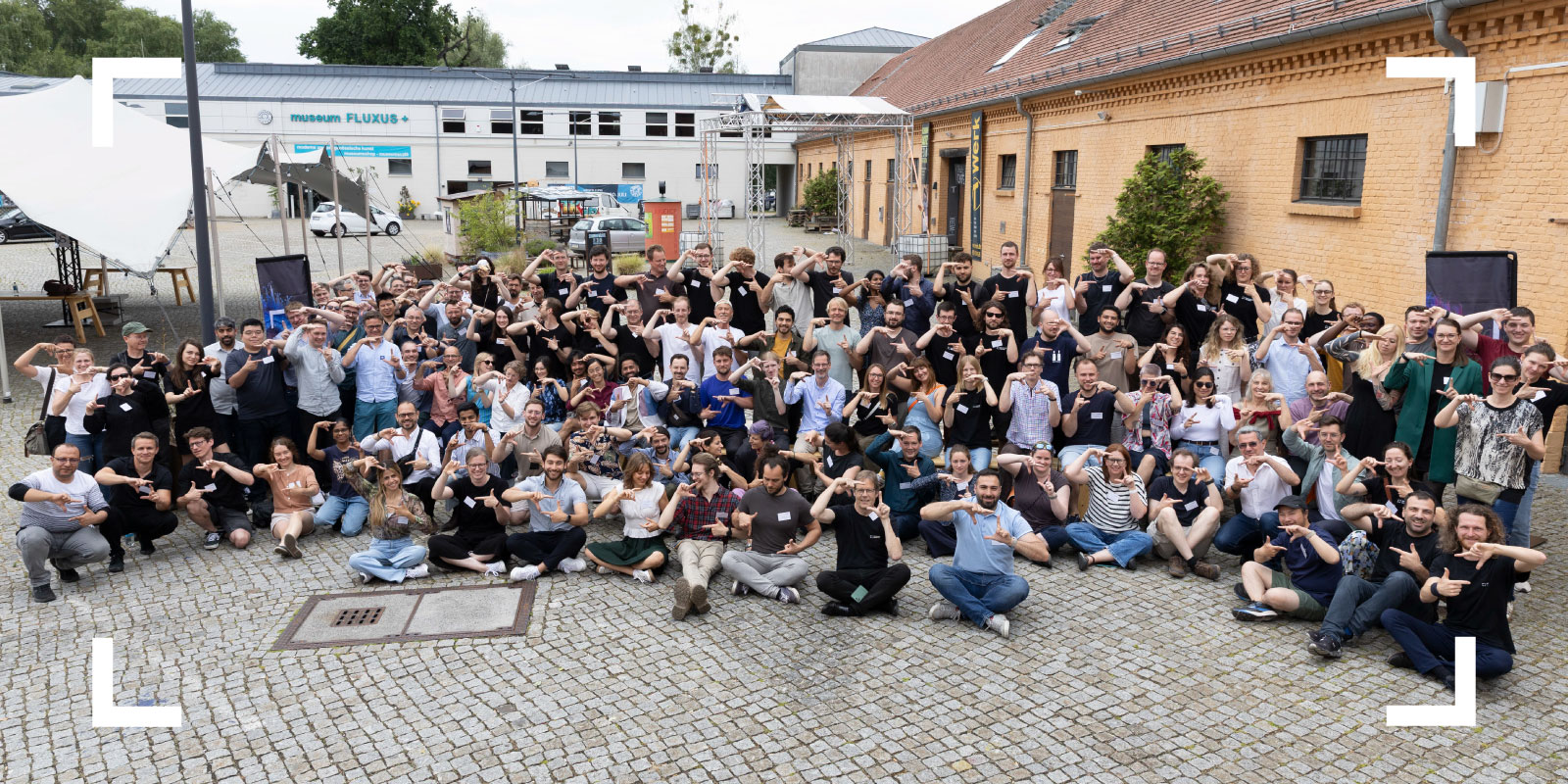
We’ve just concluded another dynamic edition of the Helmholtz Imaging Conference. From June 25 to 27, imaging experts and enthusiasts gathered at the Schinkelhalle in Potsdam to exchange ideas, present groundbreaking research, and explore the future of imaging science. The vibrant discussions, captivating keynotes, collaborative sessions, and abundant networking opportunities made this year’s conference a standout moment for our community.
Conference Kick-off
The conference opened with a warm welcome from Dagmar Kainmüller, spokesperson for Helmholtz Imaging, and Wolfgang zu Castell, Helmholtz Imaging Steering Board member, followed by the first of three keynote lectures:
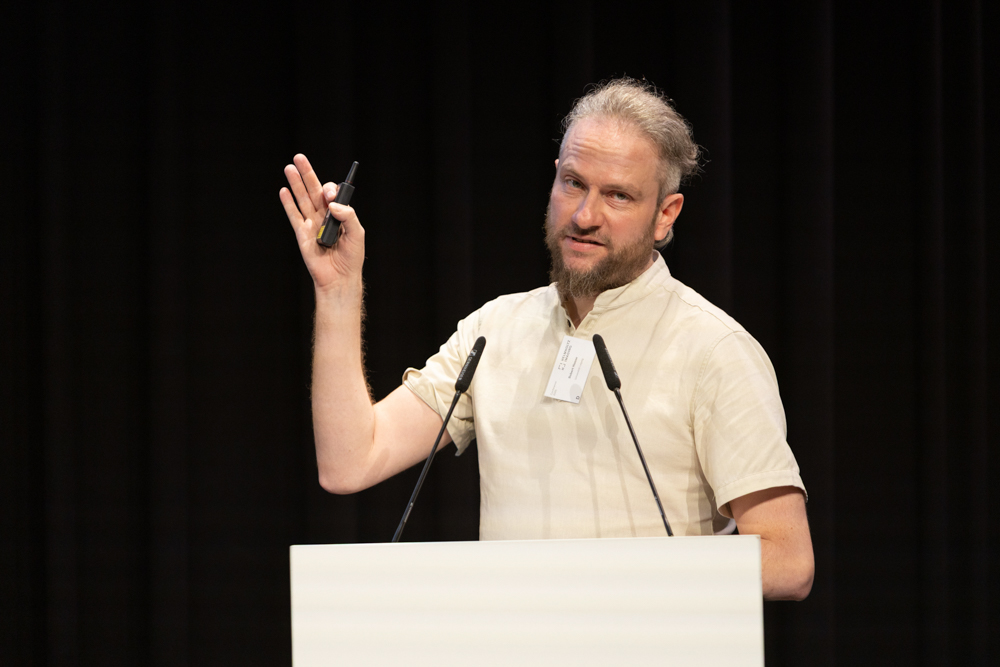
Robert Haase (Leipzig University) showcased how language models enhance bioimage analysis through automation and code generation, while stressing reproducibility and ethical AI use.
He was followed on the next days by:
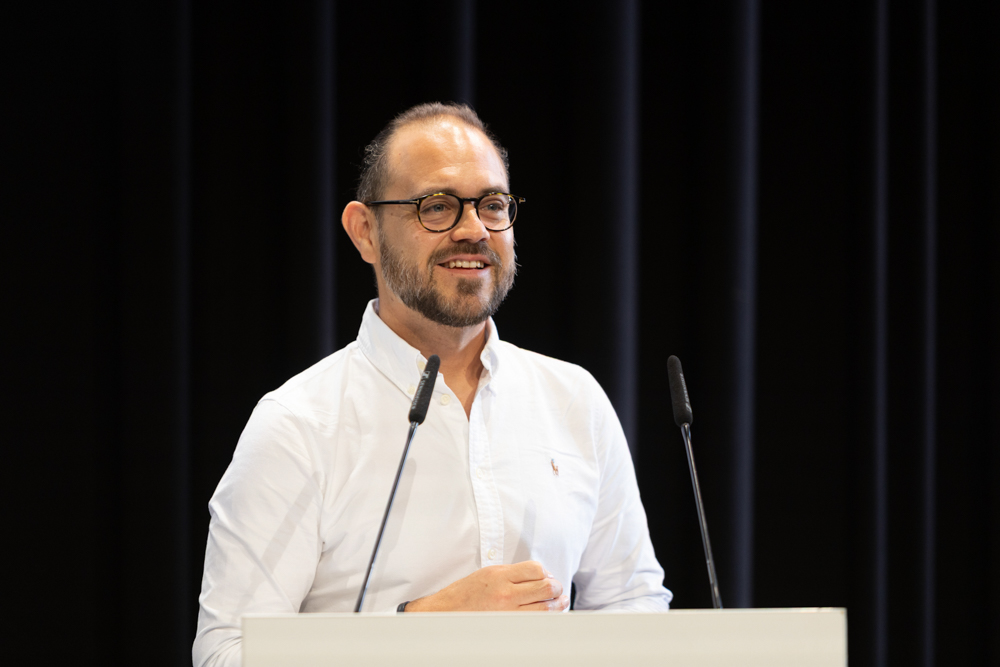
Manuel Guizar‑Sicairos (EPFL/PSI) pushed the boundaries in high-resolution, non-destructive nanostructure mapping to 3D using advanced computational X-ray imaging – exemplified by techniques such as ptychography and vector tomography.
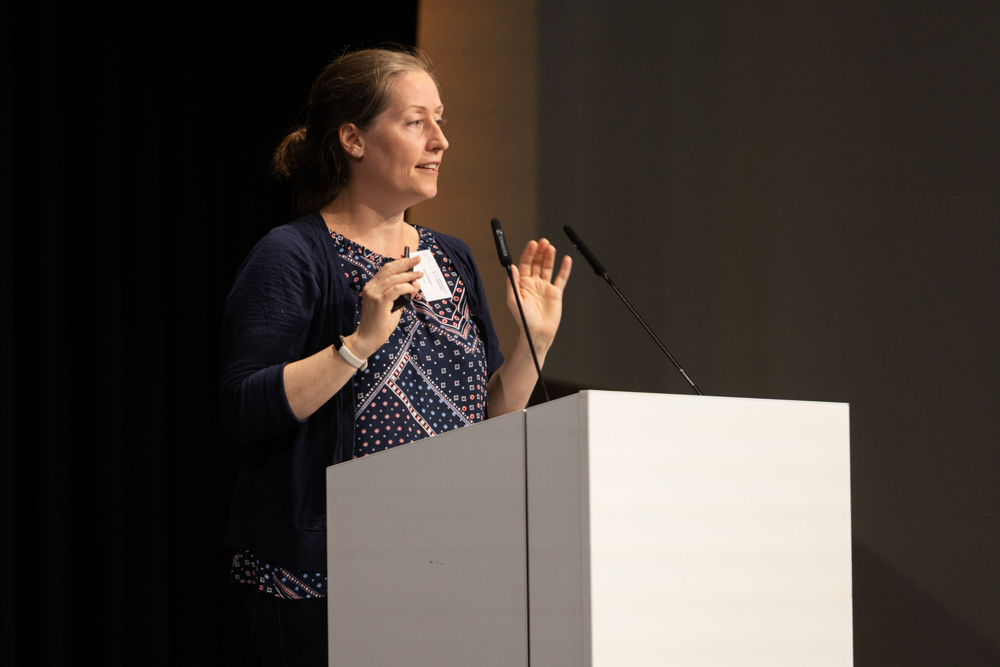
Laura Waller (UC Berkeley) explored how computational imaging transforms microscopy by leveraging algorithmically controlled illumination, phase retrieval, and dynamic modeling—pushing the frontiers of resolution, speed, and interpretability in biological imaging.
Program, Sessions & Networking
Over three days, participants immersed themselves in a richly curated program of scientific talks, poster sessions, and interactive sessions. A standout feature this year was the return of the “Bring Your Own Imaging Challenge” session, held in an unconference format, where researchers and scientists presented their imaging challenges to the community for collaborative brainstorming, sparking lively discussions and new ideas.
The scientific program highlighted the following broad themes with expert talks:
- Workflows for Imaging Pipeline
- Multi-modality / Scalability
- Data Curation & Data Handling
- Image Reconstruction
- Data Acquisition
- AI for Image Analysis
- Cross-disciplinary Data Integration
The poster session was insight-packed and engaging, fostering cross-disciplinary networking and idea exchange. Nearly half of the posters were presented by Helmholtz Imaging Projects, showcasing their pioneering work alongside strong contributions from the broader scientific community.
Several innovative (cloud) services and tools were officially launched during the conference, most of them developed and provided by Helmholtz Imaging. One additional resource, enabled by HIFIS, was initiated thanks to Helmholtz Imaging’s strong community-driven push.
Several exciting developments pushed or co-led by Helmholtz Imaging were introduced during the conference:
- Helmholtz OMERO Instance, a new cloud-based imaging resource. OMERO is an open-source client-server platform for storing, visualizing, and analyzing complex scientific image data. Interested? Register for the hands-on workshop on July 17 (spots are limited!)
- Helmholtz Model Zoo, an open tool for sharing, testing, and deploying AI models within the Helmholtz Cloud.
- nnInteractive, a cutting-edge AI-driven 3D interactive segmentation tool designed to revolutionize volumetric annotation in imaging. nnInteractive delivers unmatched accuracy and efficiency across imaging modalities. LINK
- PixelPatrol, an early-version pre-validation tool for scientific image datasets, helping researchers proactively assess data quality, understand dataset characteristics, and identify issues early in the analysis pipeline.
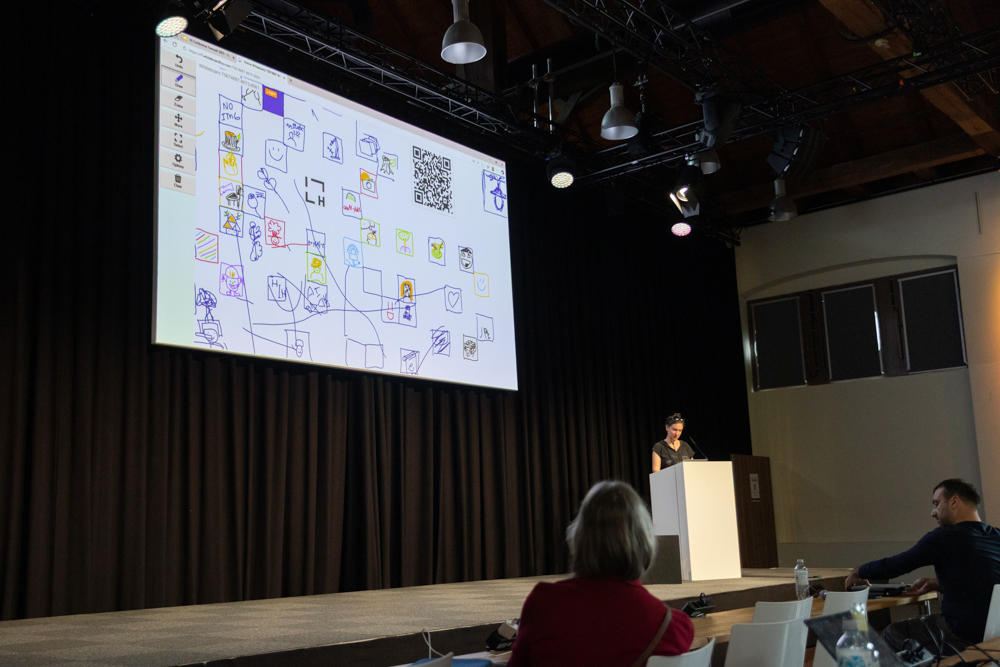
Ahead of the main program, a pre-conference workshop brought together researchers working with zebrafish to discuss recent advances and challenges in image and video analysis.
Recognition & Outlook
Attendees were invited to vote in the Best Scientific Image 2025 contest, celebrating the most striking and scientifically impressive images from the Helmholtz Association. The award ceremony took place during the conference, where a total of seven images were honored across three categories: Jury Award, Public Choice Award, and Participants’ Choice Award. Check out all winning images in our news article and explore the top 21 images in our gallery. This year’s prizes were generously donated by Siemens Healthineers and Dectris, totaling €4,500.
As we wrap up this year’s conference, we’re deeply thankful for the contributions of everyone who helped shape the program and discussions. Continuing our now traditional collaborative effort – last year singing a Helmholtz Imaging song created by ChatGPT, this year sketching our collective vision of the “Imaging Holtzhelm”, a fun wordplay of Helmholtz Imaging – was a highlight that captured the spirit of our community.
We’re already looking forward with great excitement to next year’s conference!
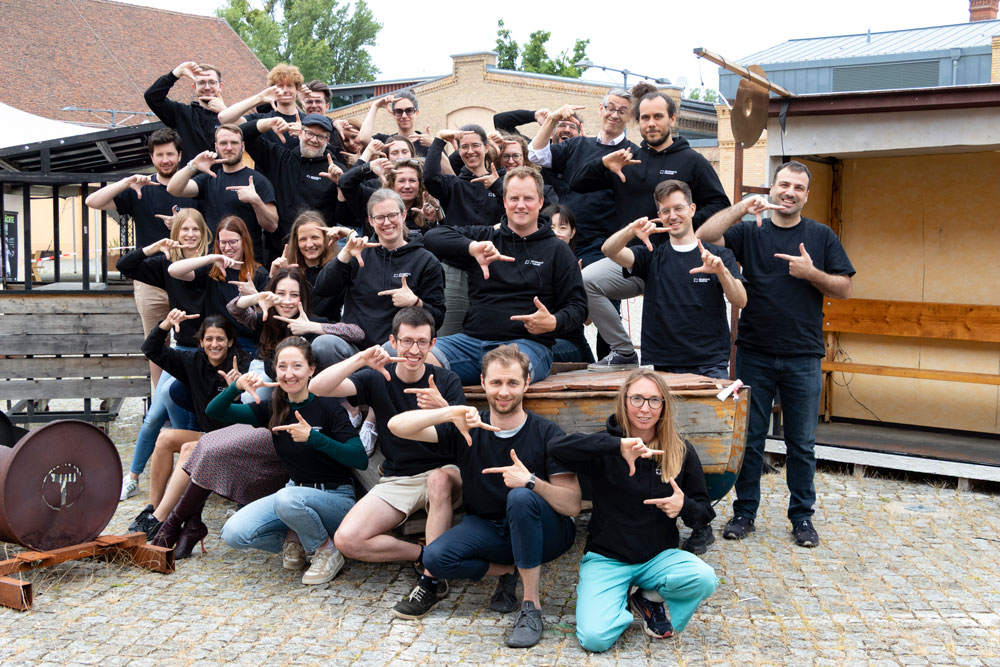
**
Stay connected through our newsletter, social media channels (see footer) and CONNECT.
Relive the conference experience with the collection of photos captured by Jörg Modrow in the gallery below.
A special thanks to all speakers, session chairs, and participants who made Helmholtz Imaging Conference 2025 an unforgettable experience!
Keynote speakers: Manuel Guizar‑Sicairos, Robert Haase & Laura Waller
Speakers: Ahmed J. Afifi, Ritz Aguilar, Ella Bahry, Kerstin Borras, Tomas Farago, Isabella Rikarda Galter, Philipp Heuser, Sarah Irvine, Tristan Kammbach, Chandrabali Karmakar, Frieder Knabe, Piers Larkman, Zeyad Abdelfattah Zaki Mahmoud, Oonagh Mannix, Artur Manukya, Daniel Santiago Penagos Molina, Mahdi Motagh, Markus Osterhoff, David Pogorzelski, Christian Schiffer, Timm Schöning, Johannes Schulz-Stellenfleth, Viktoria Schwarze, Angelo Jovin Yamachui Sitcheu, Annette Spicker, Maximilian Töllner, Eric Upschulte, Michael Weber, Sami Wirtensohn, Lin Yang
Chairs: Jan Philipp Albrecht, Danielle Bednarski, Martin Burger, Wolfgang zu Castell, Engin Eren, Fabian Isensee, Dagmar Kainmüller, Christoph Karg, Sara Krause-Solberg, Carsten Lüth, Tim Roith, Josef Lorenz Rumberger
Program Committee: Martin Burger, Ole Johannsen, Sara Krause-Solberg, Deborah Schmidt, Dasha Trofimova